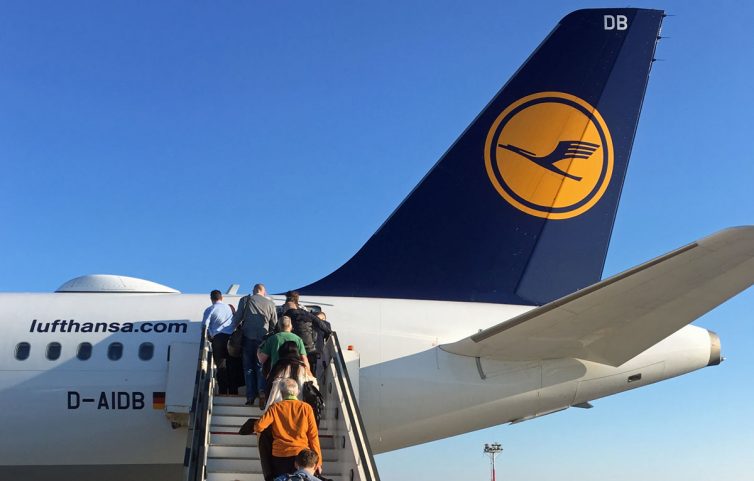
D-AIDB, one of Lufthansa’s newly-equipped IFC aircraft – Photo: JL Johnson | AirlineReporter
Here in the U.S., we have been spoiled by the ubiquity of in-flight connectivity (IFC). A few years ago the IFC saturation rate reached a level affording passengers the opportunity to adjust expectations from being a nice-to-have feature to a downright entitlement. Delta, our on-again, off-again largest domestic carrier, has long been an in-flight WiFi leader, having reached just shy of a 100% IFC-equipped fleet years ago. Thanks to early IFC pioneers like Gogo, with their ATG products, the U.S. has truly had a jump start on other markets.
Because of this, it may be surprising to our U.S. readership that IFC is not terribly common with short-to-medium-range flights in and around Europe. Lufthansa (plus subsidiaries Austrian Airlines and Eurowings) are looking to change that. In partnership with Lufthansa Technik, Honeywell Aerospace, and Inmarsat, these carriers are deploying a new IFC solution at the steady clip of eight planes per week.
I recently had the opportunity to spend some time with Lufthansa Technik to learn about Lufthansa’s new in-flight connectivity solution and even experience it first hand…
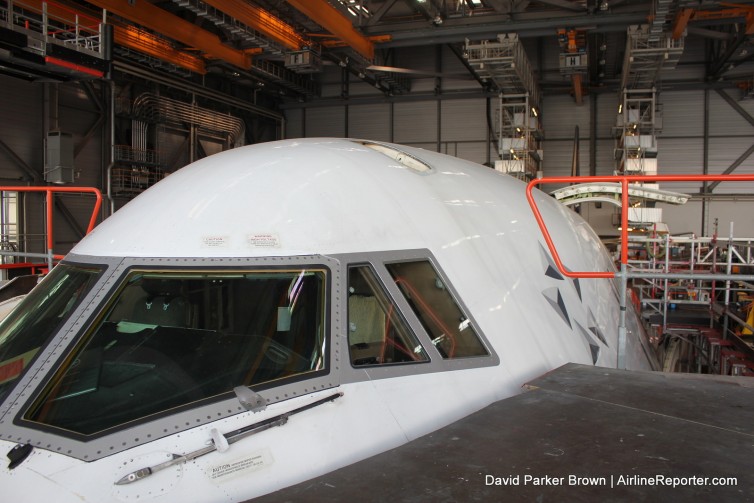
Not an angle that one sees often of a Boeing 747-400
“We actually don’t do that work here. For that kind of thing, we have to ship it out to Lufthansa Technik in Germany.” If you talk to a great number of airline maintenance employees around the world, you’ll probably hear that line a few times. Many airlines are capable of doing their own aircraft maintenance, but few locations in the world take MRO (Maintenance, Repair, and Overhaul) to the level Lufthansa Technik does.
Airlines around the world send their aircraft to Technik for jobs ranging from a mandatory C check to a nose-to-tail cabin refurbishment. Recently, I was invited to tour Technik’s facilities in Hamburg, Germany, which is just one of their multiple full-service locations around the world.
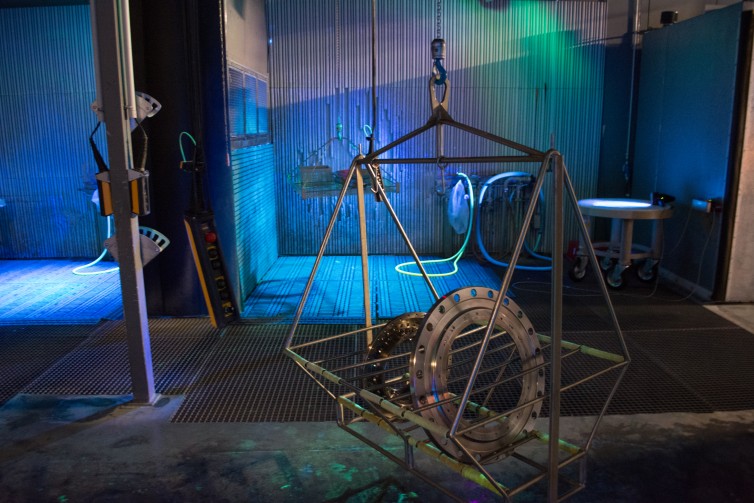
One of the black light inspection areas in Lufthansa Technik Engine Shop – Photo: Jason Rabinowitz
Our first stop on the Engine Services center. Engines are, by far, some of the most expensive parts on any aircraft. Most airlines perform only minor maintenance on their engines, but in the Engine Services center, several engines were completely torn down for a total rebuild.
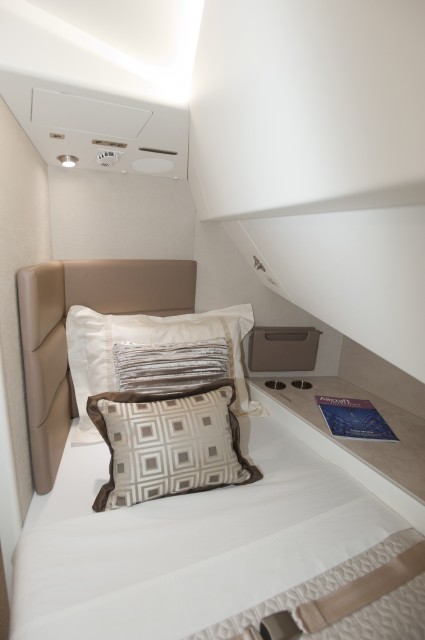
Private berth in the Aeroloft, located above the 747-8I’s main cabin. Image from Boeing.
If you were a fare-paying passenger and had access to sleeping berths like this, you would be elite. But in a Boeing 747-8 Intercontinental Boeing Business Jet, this is where the “help” sleeps.
Today, Boeing celebrated the first Aeroloft to be installed on an aircraft. The additional space, located above the main cabin, behind the upper deck, provides an extra 383 square feet of additional space. That brings the total cabin space to 5,179 square feet. Yea… that is almost 5200 square feet… in a plane.
The Aerolof has eight private beds and a changing area for crew.
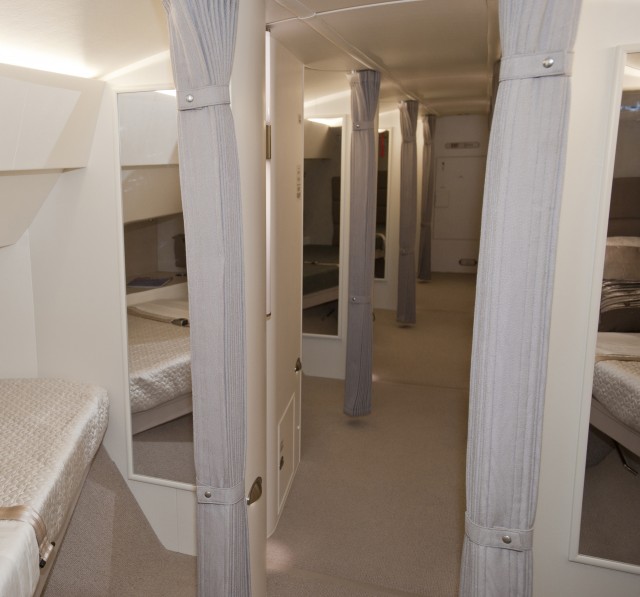
If the crew get resting areas this awesome, can’t wait to see where the VIPs get to sleep. Image from Boeing.
Installation took place in Wichita, Kansas and now the 747-8I is heading to Hamburg, Germany to have the rest of its interior installed by Lufthansa Technik.
Boeing is still sticking to this aircraft is going to an, “undisclosed customer,” but it has been well established that this plane will go to the government of Qatar.Currently, Boeing has nine orders for the 747-8I BBJ for heads of states. Time to get into politics.
MORE ON TE BOEING 747-8 Intercontinental:
* Qatar 747-8I BBJ Delivery Ceremony
* Inaugural flight of Lufthansa’s Boeing 747-8I
* Tracking down the 747-8I’s owner
* Video from the 747-8I’s first flight




